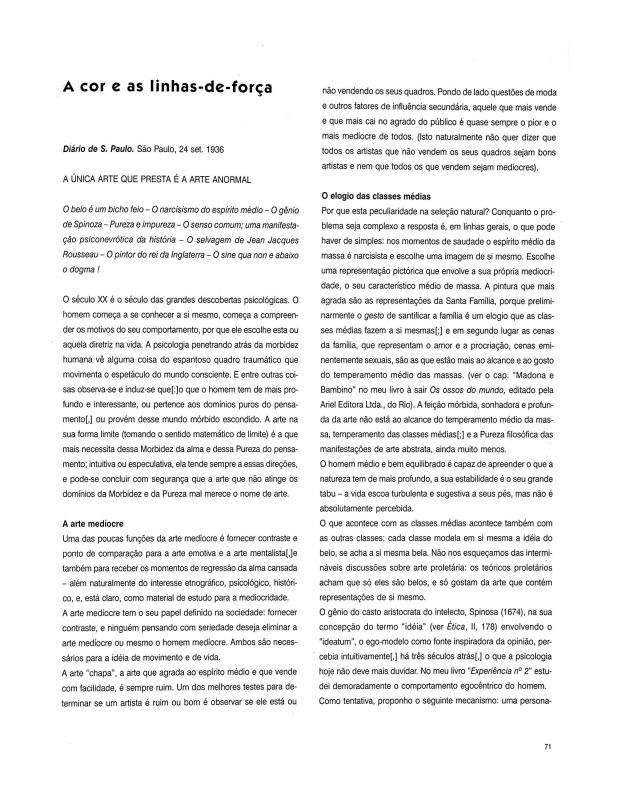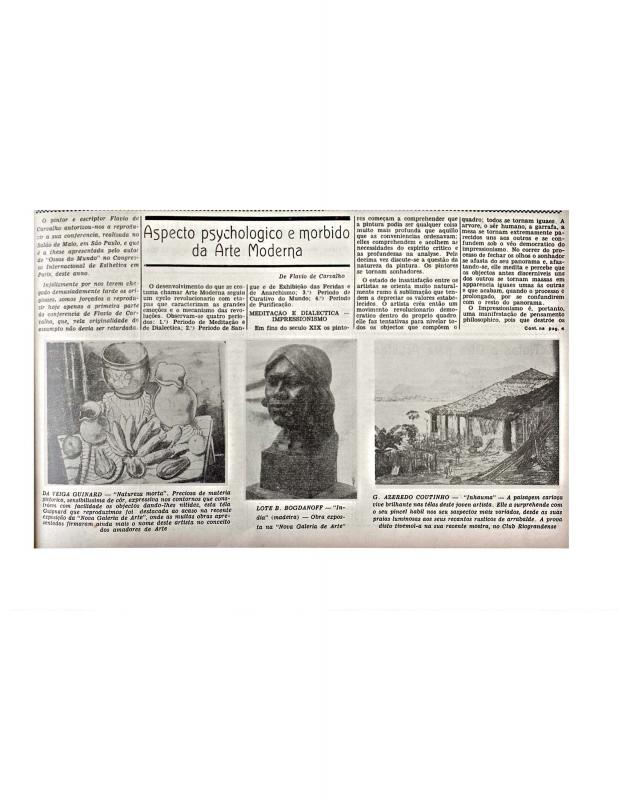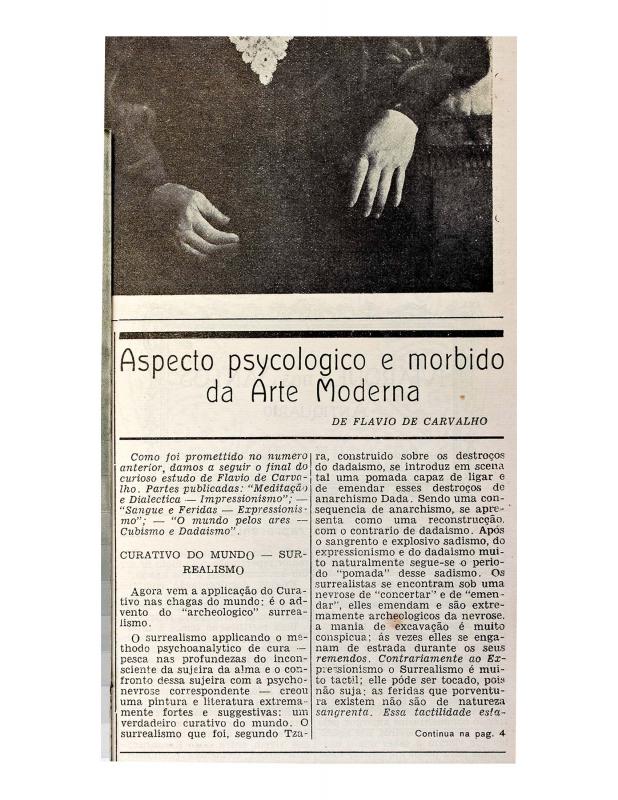In Brazil, there is no question that the book by the doctor Osório César represents a theoretical contribution to the links between art and the subconscious. César’s research had parallels to the research undertaken by Doctor Nise da Silveira, working in the 1940s in Rio de Janeiro. In fact, Osório César was a pioneer in the use of art practice as occupational therapy in the psychiatric treatment of patients. Around 1948, he founded the Escola Livre de Artes Plásticas do Juqueri, integrated into the Hospital do Juqueri, in Franco da Rocha (state of São Paulo). From the 1930s through the 1950s, the author wrote art criticism, concerned as he was with fostering a reassessment of the artwork created by patients with mental disturbances and other social issues. Working with the artist Flávio de Carvalho, César promoted exhibitions of art by children and psychotic patients at the Clube dos Artistas Modernos (CAM) in the state capital.
[See three related texts by Flávio de Carvalho in the ICAA digital archive: “A única arte que presta é a arte anormal” (doc. no. 1084943), and an essay divided into two parts, “Aspecto psicológico e mórbido da arte moderna [1] and [2], (doc. nos. 1110997 and 1110998) respectively. This text on the psychological and morbid aspects of modern art appeared to parallel de Carvalho’s scandalous speech presented at the fourth Congresso Panamericano de Arquitectos held in Rio de Janeiro (1930): “Uma tese curiosa: a cidade do homem nu” (doc. no. 783858)].




